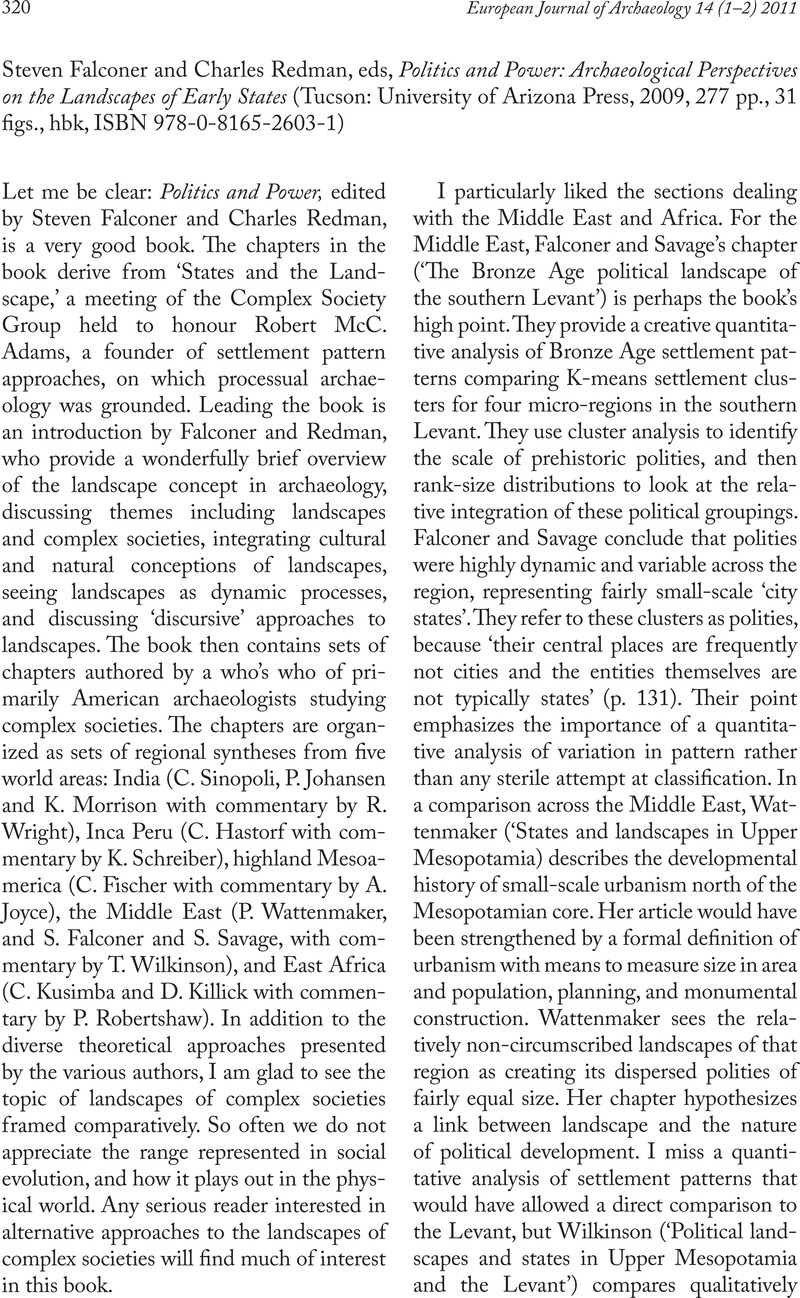No CrossRef data available.
Article contents
Steven Falconer and Charles Redman, eds, Politics and Power: Archaeological Perspectives on the Landscapes of Early States (Tucson: University of Arizona Press, 2009, 277 pp., 31 figs., hbk, ISBN 978-0-8165-2603-1)
Published online by Cambridge University Press: 25 January 2017
Abstract
An abstract is not available for this content so a preview has been provided. Please use the Get access link above for information on how to access this content.

- Type
- Reviews
- Information
- Copyright
- Copyright © 2011 Maney Publishing
References
Blanton, R., Feinman, G., Kowalewski, S. and Peregrine, P., 1996. A dual-processual theory for the evolution of Mesoamerican civilization. Current Anthropology
37: 1–14.CrossRefGoogle Scholar
Brumfiel, E., 1992. Distinguished lecture in archaeology: breaking and entering the ecosystem – gender, class, and faction steal the show. American Anthropologist
94: 551–567.CrossRefGoogle Scholar
Cliggett, L. and Pool, C., 2008. Economies and the Transformation of Landscapes. Lanham, NJ: AltaMira Press.Google Scholar
Earle, T., 1997. How Chiefs Come to Power. Stanford: Stanford University Press.CrossRefGoogle Scholar
Oka, R. and Kusimba, C.M., 2008. The archaeology of trading systems, part 1: towards a new trade synthesis. Journal of Archaeological Research
16: 339–395.Google Scholar
Peterson, C. and Drenn, R., 2005. Communities, settlements, sites, and survey. American Antiquity
70: 5–30.Google Scholar


